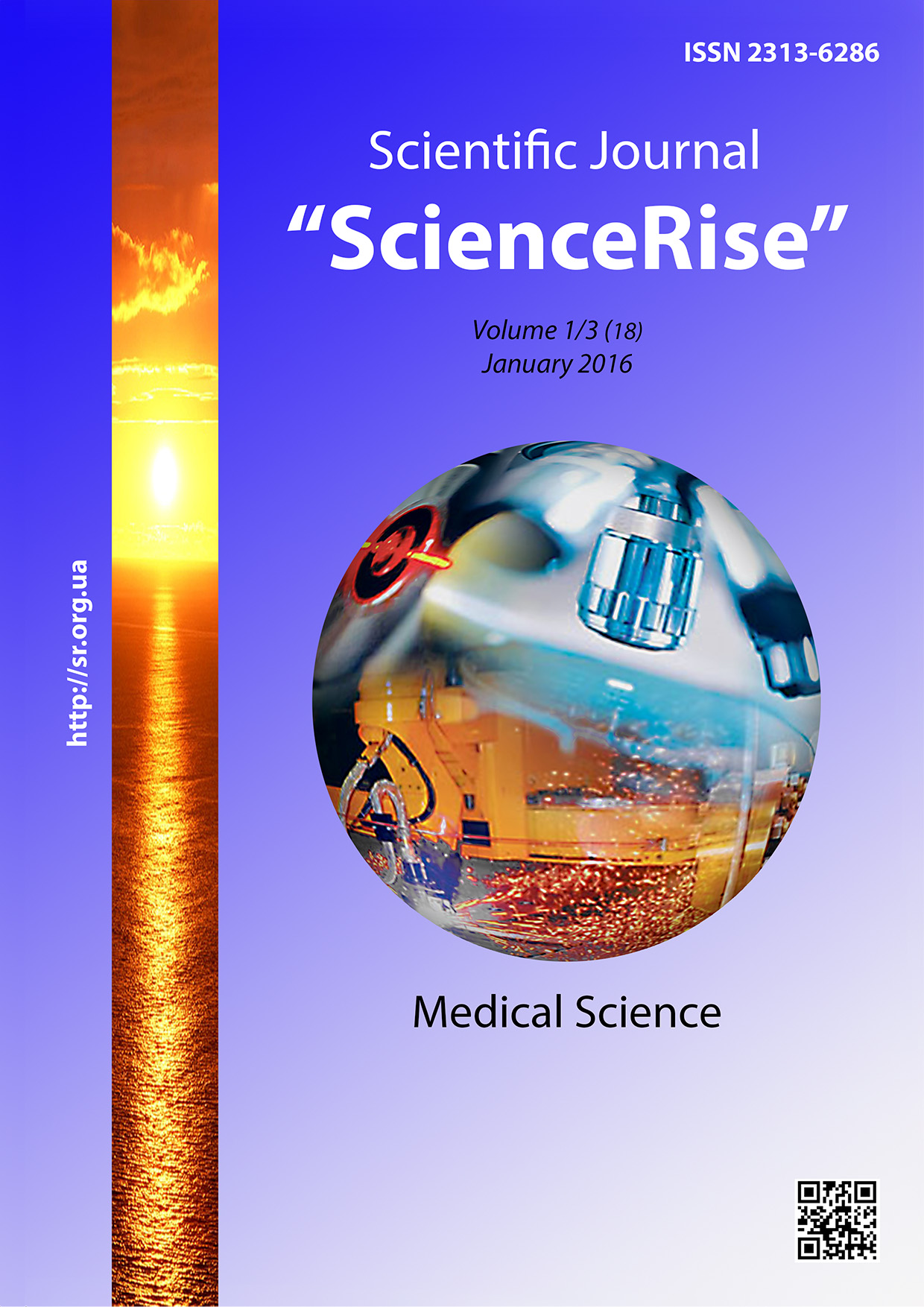An acute myeloid leukemia in elderly patients: the special features of clinical course and treatment
DOI:
https://doi.org/10.15587/2313-8416.2016.59331Keywords:
acute myeloid leukemia, old age, prognosis, treatment comorbidity, survivabilityAbstract
Aim of research. To analyze an effectiveness of treatment and survivability rate of patients with AMG of the elder age category (> 60 years) among the Ukrainian patients.
Materials and methods. Patients were treated in the department of blood system diseases of SI “Institution of hematology and transfusiology of NAMS of Ukraine” during the period 2003-2015 years. There were retrospectively studied the data of 64 patients with AML older than 60 years that were compared with analogous parameters of 83 younger patients (18-60 years).
Results of research. In the group of elderly patients with AML the number of clinically-hematologic remissions was essentially lower than among the younger patients and was 14 % against 64,9 % (р < 0,01). With the growth of age the number of the positive results of treatment significantly decreased. So in the age of 61-70 years old were obtained 23,5 % of remissions, in the age of 71-80 years the number of remissions was 5 %, and among patients older than 80 years the was no one remission. In the first year after diagnosis 48 (75 %) of 64 patients died and during the 2 year 60 patients died. The differences in survivability rate depending on age were statistically significant according to the results of log-rank test (р < 0,005).
Conclusions. The number of obtained remissions correlated with the comorbid state of patient (r = 0,845, р < 0,05). The cytostatic induced chemotherapy on the AML treatment standard «7+3» was carried out only in 25 % of cases, the age of patients who underwent it was 60-70 years. The general two-year survivability in elderly patients (> 60 років) was only 6 %, as that in these cases we are talking about patients younger than 80 years old
References
Ossenkoppele, G., Lowenberg, B. (2014). How I treat the older patient with acute myeloid leukemia. Blood, 125 (5), 767–774. doi: 10.1182/blood-2014-08-551499
Löwenberg, B., Ossenkoppele, G. J., van Putten, W., Schouten, H. C., Graux, C., Ferrant, A. et. al (2009). High-Dose Daunorubicin in Older Patients with Acute Myeloid Leukemia. New England Journal of Medicine, 361 (13), 1235–1248. doi: 10.1056/nejmoa0901409
Burnett, A., Wetzler, M., Lowenberg, B. (2011). Therapeutic Advances in Acute Myeloid Leukemia. Journal of Clinical Oncology, 29 (5), 487–494. doi: 10.1200/jco.2010.30.1820
Derolf, A. R., Kristinsson, S. Y., Andersson, T. M.-L., Landgren, O., Dickman, P. W., Bjorkholm, M. (2009). Improved patient survival for acute myeloid leukemia: a population-based study of 9729 patients diagnosed in Sweden between 1973 and 2005. Blood, 113 (16), 3666–3672. doi: 10.1182/blood-2008-09-179341
Thein, M. S., Ershler, W. B., Jemal, A., Yates, J. W., Baer, M. R. (2013). Outcome of older patients with acute myeloid leukemia. Cancer, 119 (15), 2720–2727. doi: 10.1002/cncr.28129
Pollyea, D. A., Kohrt, H. E., Medeiros, B. C. (2011). Acute myeloid leukaemia in the elderly: a review. British Journal of Haematology, 152 (5), 524–542. doi: 10.1111/j.1365-2141.2010.08470.x
Gorjainova, N. V. (2006). Vidpovid' na standartnu indukcijnu himioterapiju hvoryh z gostroju mijeloblastnuju lejkemiju zalezhno vid vmistu tymidynkinazy u syrovatci krovi. Ukr. zhurnal gematologii' ta transfuziologii', 5, 20–25.
Mazur, A. G., Myronova, O. V., Tkachenko, M. M., Gorjainova, N. V. (2014). Znachushhist' vyznachennja rivniv β2-mikroglobulinu i tymidynkinazy u krovi hvoryh dlja stratyfikacii' likuvannja hvoryh na gostru lejkemiju – mijeloblastnu ta limfoblastnu. Ukrai'ns'kyj radiologichnyj zhurnal, 4, 5–9.
Mazur, A. G., Myronova, O. V., Tkachenko, M. M., Gorjainova, N. V. (2012). Porivnjal'ne doslidzhennja puhlynnyh markeriv tymidynkinazy i beta-2 mikroglobulinu u hvoryh na gostru mijeloblastnu lejkemiju jak prognostychnyh faktoriv. Ukrai'ns'kyj radiologichnyj zhurnal, 3, 314–318.
Juliusson, G. (2011). Most 70- to 79-year-old patients with acute myeloid leukemia do benefit from intensive treatment. Blood, 117 (12), 3473–3474. doi: 10.1182/blood-2010-11-321737
Juliusson, G. (2011). Older patients with acute myeloid leukemia benefit from intensive chemotherapy: an update from the Swedish Acute Leukemia Registry. Clinical Lymphoma Myeloma and Leukemia, 11, S54–S59. doi: 10.1016/j.clml.2011.02.003
Gorjaynova N. V. (2015). The value of comorbidity for stratification of an acute myeloid leukemias treatment in adults. ScienceRise, 6/4 (11), 68–72. doi: 10.15587/2313-8416.2015.45466
Charlson, M. E., Pompei, P., Ales, K. L., MacKenzie, C. R. (1987). A new method of classifying prognostic comorbidity in longitudinal studies: Development and validation. Journal of Chronic Diseases, 40 (5), 373–383. doi: 10.1016/0021-9681(87)90171-8
Downloads
Published
Issue
Section
License
Copyright (c) 2016 Надежда Валерьевна Горяинова

This work is licensed under a Creative Commons Attribution 4.0 International License.
Our journal abides by the Creative Commons CC BY copyright rights and permissions for open access journals.
Authors, who are published in this journal, agree to the following conditions:
1. The authors reserve the right to authorship of the work and pass the first publication right of this work to the journal under the terms of a Creative Commons CC BY, which allows others to freely distribute the published research with the obligatory reference to the authors of the original work and the first publication of the work in this journal.
2. The authors have the right to conclude separate supplement agreements that relate to non-exclusive work distribution in the form in which it has been published by the journal (for example, to upload the work to the online storage of the journal or publish it as part of a monograph), provided that the reference to the first publication of the work in this journal is included.

